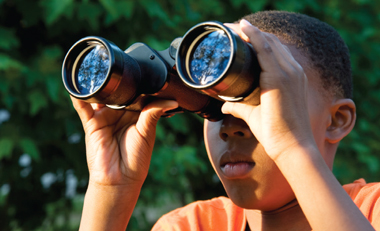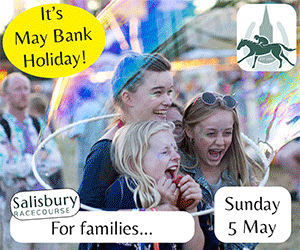Primary Times - the definitive what’s on and where to go family guide of activities and events for children of primary school age. Things to do with your kids during the school holidays including arts and craft activities, music and theatre for children, parties, competitions, days out, and family attractions along with term time drama schools, dance classes, after school clubs and sports activities. Things to do at a place near you!
Eye spy the first signs of spring
 We all know that fresh air is important and associated with so many health benefits; from helping provide a daily dosage of vitamin D, which helps assist in bone strength, to the exercise of playing outdoors helping to ward off obesity. And sometimes, a good blast of fresh air is just perfect to magic away the winter blues!
We all know that fresh air is important and associated with so many health benefits; from helping provide a daily dosage of vitamin D, which helps assist in bone strength, to the exercise of playing outdoors helping to ward off obesity. And sometimes, a good blast of fresh air is just perfect to magic away the winter blues!
Despite knowing the science of what’s best for us, sometimes we need that little gentle push to help us leave the comfort of the couch.
This time of year is particularly exciting with the end of winter in sight and each day bringing new signs that spring is just around the corner.
You may be lucky, and not even need to move from your bed to hear one of the first signs of spring. In February, as the days start to get longer, you’ll start to notice the increasing chorus of bird song at dawn with the robin, song thrush, blackbird, and great tits being some of the first birds to welcome in the spring. Natural food supplies may still be short for birds so putting out fat balls for the garden birds is still important. As male birds start to mark their territory ready for mating and nesting, February is a perfect time of year to put up nesting boxes in your garden.
For other sights of spring, you don’t need to venture too far with gardens, nearby parks or nature reserve all being perfect places to start noticing the first signs of spring.
Leap-frog into spring
If you’re lucky enough to have a pond in your garden, then February is the time to start looking out for some hoppy frog action. As the days become warmer, frogs will start to come out of their hibernation deep down in the silt at the bottom of ponds, in compost heaps or under logs, decking or sheds. Frogs will head to the water to breed. They lay their spawn in still fresh water anywhere from small ponds, slow flowing streams to larger reservoirs and lakes. Keep a look out for the bubble-like spawn in shallow streams, ponds and boggy areas near where you live.
Snowdrops, tea and cake
In your garden one of the first flowering plants, and many people’s favourite, is likely to be the snowdrop. The snowdrop, also known as ‘flower of hope’, is distinctive with its beautiful white bell-shaped flower. A stunning display of snowdrops can often be found in woodlands, gardens, parks and they often adorn the verges of roads and churchyards. Many churches, gardens and historic properties around the UK advertise ‘Snowdrop teas’ in February serving delicious homemade cakes and steaming hot mugs of tea. Keep a look out where you live for this perfect combination!
7 spots of spring
Another sure sign of spring in the garden is a visit from the 7-spot ladybird. The 7-spot ladybird is a gardener’s best friend as they are a natural pest control and can eat up to 5,000 aphids in their year-long life. The best way to attract ladybirds to your garden is to provide plenty of pollen food for them with pollen-rich plants including dill, parsley and thyme.
Valentine courtship dances
With so much activity, this time of year is perfect for introducing children to bird-watching. If you wrap up warm, and take a flask of warming hot chocolate or soup with you to your local wetland centre, river or lake, you may be lucky enough to see our feathered friends celebrating a bit of Valentine love in February. The most fascinating courtship dance comes from the Great Crested Grebe. The grebe is easily noticed by its long sharp bill, orange head plumage, black and orange facial ruffs and distinctive crest which is a vital part of the courtship display. A number of phases of the courtship are recognized including the ‘discovery ceremony’, ‘headshaking’, ‘penguin dance’ (where they raise themselves upright from the water and stand chest to chest) ‘fish offering’ (offering a beak full of water weed to each other), and then…. you might want to avert your child’s eyes and declare it’s time to move on!
The heron displays a similarly impressive courtship to look out for. During the male’s courtship dance he stretches his neck upwards and then lowers it over his back, with his prominent bill pointing upwards.
Spring into action
So shake off those wintery cobwebs, and spring into action this February half term. Many organisation and attractions are offering outdoor classes, workshops and activities to keep children occupied and help them learn more about the greatness of the outdoors. For some free fun, try out some of the National Trust 50 Things Spring Time Adventures including find set up a snail race, spot the lambs and smell the wild garlic.
If your little ones need to stretch their legs and go wild after their winter hibernation, then grab your wellies and head to one of The Wetland Trust’s 9 Wetland Centres around the UK where they are hosting the National Puddle Jumping Championship this February half term.
Discover wild places with the John Muir Award
Discover wild places, explore what makes them wild and special, do something to care for them and share your experiences!
That’s what the John Muir Award invites you to do in a spirit of fun and adventure. The John Muir Award is an environmental scheme which helps people connect with, enjoy and care for nature.
Four challenges lie at the heart of the John Muir Award.
- Discover a wild place
This could be school grounds, a local park, beach, woods, river, mountain or national park. - Explore it
- Do things to enjoy, find out more about and understand your wild places. Visit your chosen site at different times of day and night, in different seasons, alone or with others.
- Conserve it
Care for and love your wild place. Take some personal responsibility, make a difference, put something back. - Share your experience
Tell others, share and celebrate your wild place.
The award has 3 levels for you to work your way through, starting with the Discovery Award requiring a minimum of 4 days, then the Explorer Award (minimum 8 days) and finally the Conserver Award requiring a minimum of 20 days of wild experiences over 6 months.
The scheme is perfect for use in upper primary schools. Teachers can use the John Muir Award to support learning themes such as personal and health education, sustainability and citizenship or use the award to support outdoor learning of curriculum subjects.
Families can get involved too. Activities that could contribute to a Family John Muir Award might include a holiday or series of family outings to wild places; outdoor hobbies such as hill walking, bird watching climbing or canoeing; volunteering for local or national conservation organisations; painting, drawing, photography, film-making, poems and stories about the great outdoors to share your experiences with others.
Spring is the perfect time of year to start planning a new wild adventure and everything you need to get started can be found on the John Muir Award website at https://www.johnmuirtrust.org/
Useful organisations and websites to help you spring into action Canal and River Trust | National Trust | RSPB | Wildfowl and Wetland Trust | Wildlife Trust | UK National Parks




